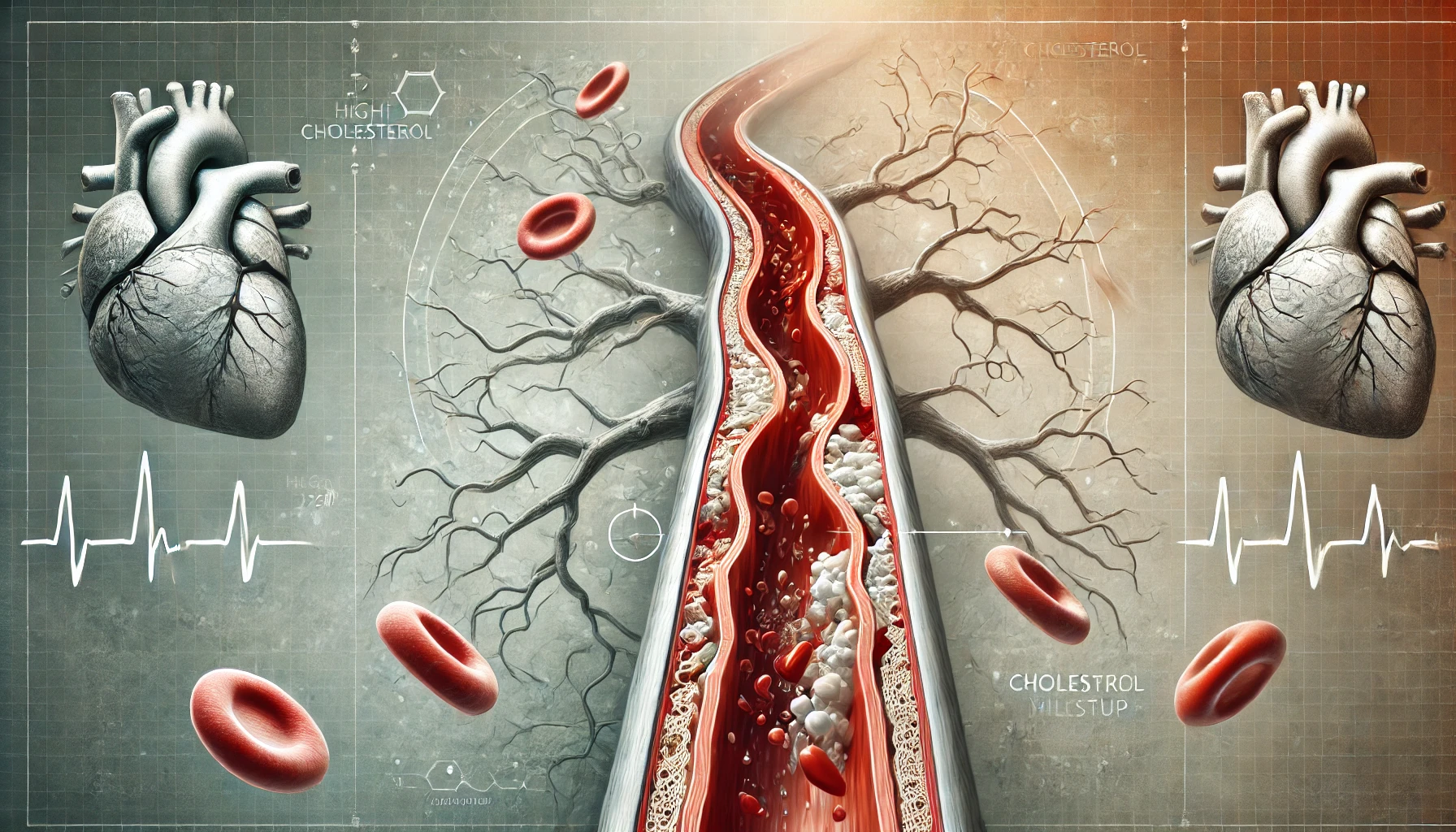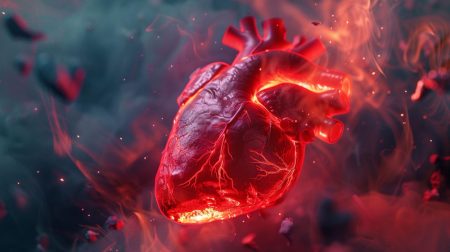Introduction
Cholesterol is a type of fat found in your blood that plays a vital role in maintaining healthy cells and producing important hormones. While cholesterol is essential for the body's normal functioning, having too much of the wrong kind can be harmful, especially as we age. Cholesterol comes in different types: low-density lipoprotein (LDL), often referred to as "bad" cholesterol, and high-density lipoprotein (HDL), known as "good" cholesterol. LDL can build up in the walls of arteries, leading to blockages, while HDL helps to remove excess cholesterol from the bloodstream.
As we grow older, our bodies go through many changes, and cholesterol levels are no exception. With aging, there is often a natural rise in LDL cholesterol and a decrease in HDL cholesterol. This shift increases the risk of developing cardiovascular diseases, including heart disease and stroke, which are leading causes of death worldwide, especially among older adults. Changes in hormone levels, such as the drop in estrogen after menopause in women, can also contribute to higher cholesterol levels, making it a critical health marker to watch in the aging process.
The good news is that cholesterol levels are manageable. Diet, exercise, and, when necessary, medications can all help maintain a healthy balance. Understanding how cholesterol works, why it changes as we age, and what we can do to control it are key to maintaining heart health and overall well-being. In this post, we'll explore how cholesterol affects aging adults, the risks associated with high cholesterol, and actionable steps you can take to protect yourself. Whether you're already watching your cholesterol or just starting to learn, it's never too late to make heart-healthy changes.
1. What is Cholesterol?
Understanding Cholesterol
Cholesterol is a waxy, fat-like substance found in every cell of the body. While it often gets a bad reputation, cholesterol is essential for many important bodily functions. It helps in producing cell membranes, certain hormones (such as estrogen, testosterone, and cortisol), and vitamin D. Cholesterol is also necessary for creating bile acids, which help digest fat in the intestines.
However, cholesterol doesn’t dissolve in the bloodstream. Instead, it is carried through the blood by lipoproteins, which are a combination of fat (lipid) and protein. There are two main types of cholesterol that are crucial to understand when it comes to heart health: low-density lipoprotein (LDL) and high-density lipoprotein (HDL).
LDL: The "Bad" Cholesterol
LDL, or low-density lipoprotein, is often referred to as "bad" cholesterol because when its levels are too high, it can lead to the buildup of cholesterol in the walls of arteries. This accumulation is known as plaque, and over time, it causes the arteries to narrow and harden—a condition called atherosclerosis. Narrowed arteries can restrict blood flow to vital organs, leading to serious health problems such as heart attacks and strokes. Therefore, keeping LDL levels in check is important to prevent long-term damage to the cardiovascular system.
LDL levels tend to increase as people age, making older adults more vulnerable to the risks associated with high cholesterol. Factors like diet, genetics, and overall health also play a role in determining an individual's LDL levels.
HDL: The "Good" Cholesterol
On the other hand, HDL, or high-density lipoprotein, is known as "good" cholesterol. HDL helps remove excess cholesterol from the bloodstream and transports it to the liver, where it can be processed and eliminated from the body. Higher levels of HDL are beneficial because they reduce the risk of plaque buildup in the arteries, essentially acting as a cleaning mechanism that helps keep the cardiovascular system functioning well.
While HDL levels can decrease with age, particularly in postmenopausal women, maintaining a healthy lifestyle can help boost HDL. Regular physical activity, eating healthy fats (like those found in fish, nuts, and olive oil), and avoiding smoking are ways to support good cholesterol levels.
Triglycerides: Another Important Factor
Triglycerides are another type of fat found in the blood. While they are not cholesterol, they often come up in cholesterol tests because high levels of triglycerides combined with high LDL or low HDL can increase the risk of heart disease. Triglycerides store excess energy from the food you eat, and high levels are often linked to obesity, unmanaged diabetes, and a sedentary lifestyle.
Balancing Cholesterol for Better Health
Maintaining a healthy balance between LDL and HDL is key to preventing cardiovascular issues. It's not just about lowering cholesterol levels overall, but ensuring that your LDL is low enough and your HDL is high enough to protect your heart. Regular blood tests, lifestyle adjustments, and sometimes medications can help keep cholesterol levels in a healthy range, especially as you age.
2. How Cholesterol Levels Change with Age
The Aging Process and Cholesterol

As we age, our bodies undergo many physiological changes, including shifts in how we process cholesterol. One common change is an increase in LDL cholesterol ("bad" cholesterol) and a decrease in HDL cholesterol ("good" cholesterol). This shift can lead to an increased risk of heart disease, stroke, and other cardiovascular conditions. Cholesterol levels typically rise starting around middle age and continue to fluctuate as we grow older.
Several factors influence this change, including lifestyle, genetics, and hormonal shifts. While it's normal for cholesterol levels to rise somewhat with age, unhealthy levels can pose a significant risk to older adults, making it important to monitor and manage cholesterol as part of aging well.
Cholesterol Changes in Men
For men, cholesterol levels tend to rise steadily after the age of 20. In their younger years, men often have higher total cholesterol and higher LDL levels compared to women. By middle age (around 45 to 55), men typically experience their peak cholesterol levels. One reason for this rise is a slowing metabolism, which can lead to increased body fat and higher cholesterol production by the liver.
After age 50, however, men's cholesterol levels often stabilize or increase more slowly. Even so, higher LDL levels combined with factors such as high blood pressure or smoking can significantly increase the risk of heart disease.
Cholesterol Changes in Women
Women tend to have lower LDL and higher HDL levels than men during their reproductive years due to the protective effect of estrogen, a hormone that helps regulate cholesterol levels. However, after menopause, cholesterol levels often rise sharply. The decrease in estrogen that occurs during and after menopause can lead to a drop in HDL cholesterol and an increase in LDL cholesterol, putting postmenopausal women at higher risk for cardiovascular disease.
In fact, after menopause, women's risk of heart disease begins to equal or even surpass that of men. This change makes it particularly important for women to monitor their cholesterol levels regularly as they approach and go through menopause.
Hormonal Influence on Cholesterol
Hormones play a major role in regulating cholesterol levels, which is why aging can impact cholesterol in different ways for men and women. In women, estrogen promotes higher HDL levels and helps keep LDL levels in check, but once estrogen levels decline with menopause, this protection diminishes. In men, testosterone levels decline more gradually with age, which can lead to changes in body fat distribution and cholesterol metabolism.
Other hormones, such as thyroid hormones, also affect cholesterol regulation. Hypothyroidism (an underactive thyroid) can cause elevated LDL levels, a common issue in older adults. This is one reason why cholesterol screening is often recommended alongside thyroid function tests for older individuals.
The Importance of Regular Monitoring
As cholesterol levels tend to rise with age, regular cholesterol checks become increasingly important. Adults should start monitoring their cholesterol levels in their 20s, but more frequent checks are advised as they reach their 40s, 50s, and beyond. Early detection of high cholesterol levels can prompt lifestyle changes or treatments to prevent the long-term damage associated with aging and cholesterol buildup.
3. Risks of High Cholesterol in Older Adults
How High Cholesterol Affects the Heart and Blood Vessels
One of the most significant risks associated with high cholesterol in older adults is cardiovascular disease. Cholesterol, particularly low-density lipoprotein (LDL), can build up on the walls of the arteries, leading to the formation of plaque. Over time, this buildup narrows and hardens the arteries, a condition known as atherosclerosis. As the arteries become more restricted, it becomes harder for blood to flow through them, which can result in serious health problems like heart attacks, strokes, and peripheral artery disease (PAD).
In older adults, the risk is magnified because arteries naturally become stiffer with age, and the cumulative effect of high cholesterol over a lifetime accelerates this process. Plaque buildup can also cause inflammation in the arteries, further increasing the likelihood of cardiovascular complications.
Heart Disease and Heart Attacks
High cholesterol is a major contributor to coronary artery disease, the most common form of heart disease. This condition occurs when the arteries that supply blood to the heart become blocked by cholesterol-rich plaque, reducing oxygen flow to the heart muscle. If a plaque ruptures, it can cause a blood clot, potentially leading to a heart attack.
Older adults are more susceptible to heart disease due to the natural aging of their blood vessels combined with years of cholesterol accumulation. Heart attacks are a serious risk, especially when combined with other factors like high blood pressure, obesity, and smoking.
Stroke
Another severe risk of high cholesterol is stroke, which occurs when the blood supply to part of the brain is interrupted. Just like in the heart, cholesterol buildup in the arteries leading to the brain can cause a blockage, cutting off oxygen and nutrients to brain cells. A stroke can lead to permanent brain damage, disability, or even death.

Older adults with high cholesterol face an increased risk of ischemic stroke, which is caused by blocked arteries. Since age is already a major risk factor for stroke, maintaining healthy cholesterol levels is essential in reducing this risk.
Peripheral Artery Disease (PAD)
High cholesterol can also affect blood vessels outside of the heart and brain, leading to peripheral artery disease (PAD). This condition occurs when plaque builds up in the arteries that supply blood to the legs, arms, and other extremities. PAD can cause pain, numbness, or cramping in the legs, particularly during physical activity. Left untreated, PAD can lead to tissue damage or even the need for amputation.
Older adults are at higher risk for PAD due to both the natural aging process and prolonged exposure to high cholesterol levels. Like heart disease, PAD is linked to atherosclerosis and often goes hand-in-hand with other conditions like diabetes and hypertension.
Other Health Risks of High Cholesterol
High cholesterol doesn’t just affect the heart and blood vessels. Studies have shown that it can contribute to the development of other age-related conditions, including dementia and cognitive decline. Cholesterol plays a role in maintaining the structure of brain cells, but too much LDL cholesterol can increase the risk of damage to the brain’s blood vessels, potentially leading to Alzheimer's disease and other forms of dementia.
Chronic kidney disease is another potential risk, as the same processes that lead to clogged arteries can affect the blood vessels in the kidneys. Over time, poor kidney function can complicate the treatment of high cholesterol, creating a vicious cycle.
The Need for Vigilance
Given these risks, older adults should be especially vigilant about managing cholesterol levels. Routine cholesterol checks and proactive lifestyle changes can make a big difference in lowering the risk of these serious health conditions. Working closely with healthcare providers to monitor cholesterol and other risk factors is essential for maintaining heart health and overall well-being.
4. Managing Cholesterol as You Age
Diet and Cholesterol
One of the most effective ways to manage cholesterol as you age is by making dietary changes. Eating a heart-healthy diet can help lower low-density lipoprotein (LDL) cholesterol, increase high-density lipoprotein (HDL) cholesterol, and prevent further cholesterol buildup in the arteries.
A key part of a cholesterol-friendly diet is reducing saturated and trans fats. Saturated fats, found in red meat, butter, and full-fat dairy products, can raise LDL levels. Trans fats, found in many processed foods, are even more harmful as they raise LDL while lowering HDL. Instead, focus on healthier fats like those in olive oil, avocados, and fatty fish like salmon, which are high in omega-3 fatty acids and can help improve cholesterol levels.

Including more fiber in your diet is another important step. Soluble fiber, found in foods like oats, beans, lentils, and fruits, helps reduce cholesterol absorption in the bloodstream. Plant-based foods, such as vegetables, whole grains, and nuts, provide essential nutrients without the cholesterol found in animal products.
Physical Activity and Weight Management
Regular exercise is crucial for managing cholesterol levels, particularly in older adults. Physical activity helps raise HDL cholesterol and lower LDL cholesterol. It also promotes better circulation, reduces inflammation, and helps maintain a healthy weight, all of which contribute to better heart health.
Aim for at least 150 minutes of moderate exercise per week, which can include activities like brisk walking, swimming, or cycling. Strength training exercises can also be beneficial, as maintaining muscle mass becomes more important with age. Even small amounts of physical activity, such as taking the stairs or gardening, can make a significant difference.
Medications for Cholesterol Management
In some cases, lifestyle changes alone may not be enough to manage cholesterol levels, especially as you age. Medications, particularly statins, are commonly prescribed to help lower LDL cholesterol. Statins work by reducing the liver's production of cholesterol and can significantly reduce the risk of heart disease and stroke in older adults.
Other medications, such as ezetimibe, can help reduce cholesterol absorption from food, while PCSK9 inhibitors are newer drugs used for people with very high cholesterol levels. It's essential to discuss with your healthcare provider which medications are appropriate based on your overall health and risk factors.
Lifestyle Habits for Better Cholesterol
In addition to diet and exercise, avoiding tobacco and limiting alcohol consumption are important lifestyle habits for managing cholesterol. Smoking lowers HDL cholesterol and damages blood vessels, making cholesterol buildup more likely. Reducing alcohol intake can also improve cholesterol levels, especially when combined with other healthy habits.
5. Monitoring Cholesterol Levels
The Importance of Regular Cholesterol Checks
Monitoring your cholesterol levels becomes increasingly important as you age, especially because cholesterol levels tend to rise naturally over time. Regular cholesterol screenings are vital for detecting any potential problems early on, allowing you to take proactive steps to manage your heart health. Many people may not realize they have high cholesterol because it typically doesn’t cause symptoms until complications like heart disease or stroke occur. That’s why routine blood tests, even in the absence of symptoms, are essential for preventive care.
Doctors generally recommend that adults have their cholesterol checked every 4 to 6 years starting in their 20s, but as you get older or if you have other risk factors (such as a family history of heart disease, obesity, or diabetes), more frequent testing may be needed.
What a Cholesterol Test Measures
A cholesterol test, also known as a lipid panel or lipid profile, measures several key components in your blood:
- Total cholesterol: This is the overall amount of cholesterol in your blood, including both LDL and HDL.
- LDL cholesterol: Often referred to as "bad" cholesterol, this is the type that can build up in your arteries, leading to heart disease. The goal is to keep LDL cholesterol low.
- HDL cholesterol: Known as "good" cholesterol, HDL helps remove excess cholesterol from your bloodstream, so higher levels of HDL are better.
- Triglycerides: These are another type of fat in your blood, often linked to an increased risk of heart disease, especially when combined with high LDL or low HDL levels.
These numbers give your doctor a complete picture of your cholesterol health and help them determine whether any treatment or lifestyle changes are necessary.
Understanding Cholesterol Levels
When reviewing your cholesterol test results, it’s important to understand what each number means. As a general guideline:
- Total cholesterol should ideally be less than 200 mg/dL. Levels between 200 and 239 mg/dL are considered borderline high, while 240 mg/dL or more is high.
- LDL cholesterol should be less than 100 mg/dL for optimal heart health, with levels above 160 mg/dL considered high.
- HDL cholesterol should be 60 mg/dL or higher to offer heart protection, with levels below 40 mg/dL for men and 50 mg/dL for women considered a risk.
- Triglycerides should be less than 150 mg/dL for normal levels, with anything over 200 mg/dL considered high.
When to Seek Medical Advice
If your cholesterol levels are outside the healthy range, it’s important to talk to your healthcare provider about the next steps. They may recommend lifestyle changes, medications, or more frequent monitoring. By keeping track of your cholesterol regularly, you can make informed decisions about your health and reduce the risk of developing heart disease as you age.

Conclusion
Managing cholesterol is a crucial part of staying healthy, especially as we age. Cholesterol plays an important role in our bodies, but when LDL cholesterol levels are too high, it can lead to serious health risks, including heart disease, stroke, and peripheral artery disease. These risks increase as we get older, making it essential to keep an eye on cholesterol levels and take action when needed.
The good news is that there are many ways to control cholesterol. A heart-healthy diet, rich in fruits, vegetables, whole grains, and healthy fats, can make a significant impact on reducing LDL levels and improving HDL levels. Regular physical activity also boosts heart health, helping to manage weight and cholesterol levels. For those who struggle to manage cholesterol through lifestyle changes alone, medications like statins can be effective tools to lower LDL and prevent complications.
Routine cholesterol monitoring is another key part of prevention. Regular blood tests allow you to understand your cholesterol profile and act before high levels cause damage. Knowing your numbers and understanding what they mean empowers you to make better health decisions as you age.
It's never too late to take control of your cholesterol and reduce the risks of heart disease and other related conditions. By staying informed, maintaining a healthy lifestyle, and working with your healthcare provider, you can protect your heart and live a healthier, longer life. So, whether you're starting early or making changes later in life, managing your cholesterol is an investment in your future well-being.


